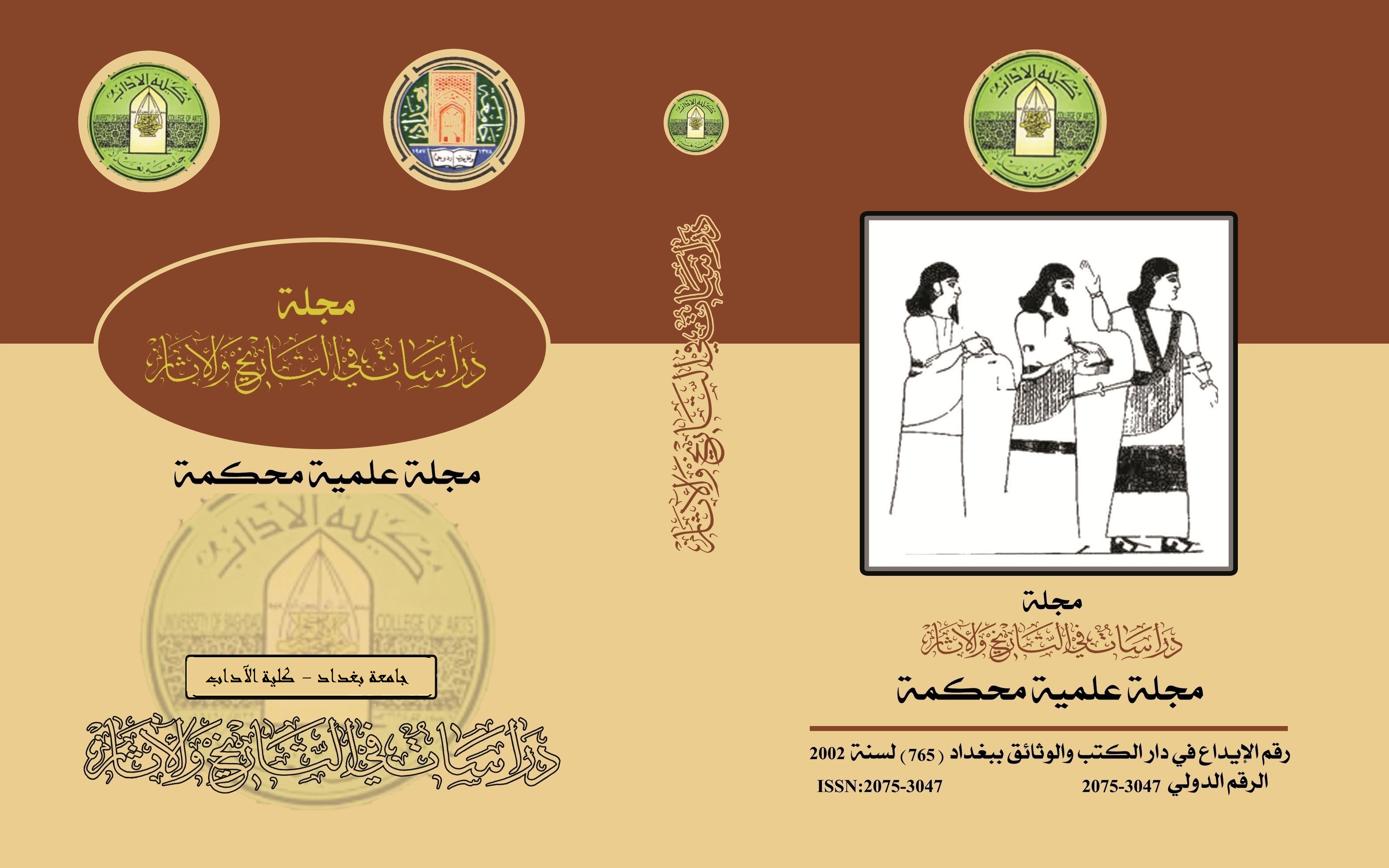منارات شرق البحر الأبيض المتوسط من خلال المصادر العثمانية والتركية
الكلمات المفتاحية:
الإسكندرية، الأناضول، بيروت، فلسطين، قبرص، اللاذقيةالملخص
أنشئت المنارات منذ العصور القديمة، وهي تعد واحدة من أهم العناصر المساعدة لملاحة البحارة لتجنب السفن المياه الضحلة والمنحدرات الخطرة على السواحل، وتساعد السفن أيضا على معرفة طريقها في الليل. المنارة بناء مرتفع يصدر ضوءًا في الليل لإرشاد البحارة والسفن؛ من أجل أن تتفادى الاصطدام بالصخور أو الجنوح للشاطئ حتى ترسي السفن سالمة في الميناء؛ ولهذا أصبحت المنارة علامة مهمة في الملاحة. كما استمر التطور المعماري والتكنولوجي وأنظمة الإضاءة للمنارات عبر العصور، وتعتبر سواحل البحر الأبيض المتوسط أقدم منطقة تجارية بحرية في العالم. ومع تطور العلوم والتقنية في القرن الثامن عشر وارتفاع حجم التجارة البحرية في البحر المتوسط دعت الحاجة إلى زيادة عدد المنارات، وبُنيت منارات جديدة في مناطق مختلفة على سواحله، وأسست الدولة العثمانية إدارة عامة لبناء المنارات، وتشغيلها، وصيانتها، وإصلاحها.
المراجع
- Fenerler Tarifatı, İstanbul 1294.
- Şemseddin Sami, Kamus-ı Türki, İstanbul 1890.
- Tüccarzade İbrahim Hilmi; Umumi Cep Atlası, İstanbul 1324.
ثانيًا: الوثائق العثمانية المحفوظة في أرشيف رئاسة الوزراء في استانبول:
- Osmanlı Arşivi, Cevdet Bahriye, nr. 10-498; nr. 62-2912.
ثالثًا: الكتب المطبوعة:
- Albayrak, M. Taner; “Doğu Akdeniz’de Deniz Fenerleri”, Türk Deniz Ticareti Sempozyumu-III (Mersin ve Doğu Akdeniz), Mersin 2011, s. 268-287.
- Braudel, Fernand; Akdeniz ve Akdeniz Dünyası, İstanbul 1989-1990, 2 cilt.
- Görgün, Hilal; “Port Said”, Türkiye Diyanet Vakfı İslam Ansiklopedisi, c. 34, s. 326-327.
- Susmuş, Cenk İsmail Murat; Türkiye’de Deniz Fenerlerinin Geçmişi ve Geleceği, İstanbul Üniversitesi Deniz Bilimleri ve İşletmeciliği Enstitüsü, Yüksek Lisans Tezi (2004).
- The Redhouse, English-Turkish Dictionary, İstanbul 2012.
- Toroslu, M. Vefa; Denizciye Göz Kırpan Sevdalar: Deniz Fenerleri, İzmir 2009.
- Tuncel, Metin; “Akdeniz”, Türkiye Diyanet Vakfı İslam Ansiklopedisi, c. 2, s. 229-231.
- Ulutaş, Songül-Yurtseven, Emre Evren; “Denizlerin Sessiz Tanıkları Fenerler”, Dokuz Eylül Üniversitesi, Denizcilik Fakültesi Dergisi, cilt 7, sayı 1, s. 39-54.
التنزيلات
منشور
إصدار
القسم
الرخصة

هذا العمل مرخص بموجب Creative Commons Attribution 4.0 International License.
:حقوق الطبع والنشر والترخيص
بالنسبة لجميع البحوث المنشورة في مجلة دراسات في التاريخ والآثار، يحتفظ الباحثون بحقوق النشر. يتم ترخيص البحوث بموجب ترخيص Creative Commons CC BY 4.0 المفتوح ، مما يعني أنه يجوز لأي شخص تنزيل البحث وقراءته مجانًا. بالإضافة إلى ذلك ، يجوز إعادة استخدام البحث واقتباسه شريطة أن يتم الاستشهاد المصدر المنشور الأصلي. تتيح هذه الشروط الاستخدام الأقصى لعمل الباحث وعرضه.
:إعادة إنتاج البحوث المنشورة من الناشرين الآخرين
من الضروري للغاية أن يحصل الباحثون على إذن لإعادة إنتاج أي بحث منشورة (أشكال أو مخططات أو جداول أو أي مقتطفات من نص) لا يدخل في نطاق الملكية العامة أو لا يملكون حقوق نشرها. يجب أن يطلب الباحثون إذنًا من مؤلف حقوق النشر (عادة ما يكون الناشر).
يطلب الإذن في الحالات التالية:
بحوثك الخاصة المنشورة من قِبل ناشرين آخرين ولم تحتفظ بحقوق النشر الخاصة بها.
مقتطفات كبيرة من بحوث أي شخص أو سلسلة من البحوث المنشورة.
استخدم الجداول والرسوم البيانية والمخططات والمخططات والأعمال الفنية إذا لم يتم التعديل عليها.
الصور الفوتوغرافية التي لا تملك حقوق لنشرها.
لا يطلب الإذن في الحالات التالية:
إعادة بناء الجدول الخاص بك مع البيانات المنشورة بالفعل في مكان آخر. يرجى ملاحظة أنه في هذه الحالة يجب عليك ذكر مصدر البيانات في شكل "بيانات من ..." أو "مقتبس من ...".
تعتبر عروض الأسعار القصيرة معقولة الاستخدام العادل ، وبالتالي لا تتطلب إذنًا.
الرسوم البيانية ، الرسوم البيانية ، المخططات ، الأعمال الفنية التي أعاد الباحث رسمها بالكامل والتي تم تغييرها بشكل ملحوظ إلى درجة لا تتطلب الاعتراف.
الحصول على إذن
لتجنب التأخير غير الضروري في عملية النشر ، يجب أن تبدأ في الحصول على أذونات في أقرب وقت ممكن. لا يمكن لمجلة الآداب نشر بحث مقتبس من منشورات أخرى دون إذن.
قد يمنحك مالك حقوق الطبع والنشر تعليمات بشأن شكل الإقرار الواجب اتباعه لتوثيق عمله ؛ بخلاف ذلك ، اتبع النمط: "مستنسخ بإذن من [المؤلف] ، [كتاب / المجلة] ؛ نشره [الناشر] ، [السنة]." في نهاية شرح الجدول ، الشكل أو المخطط.



















